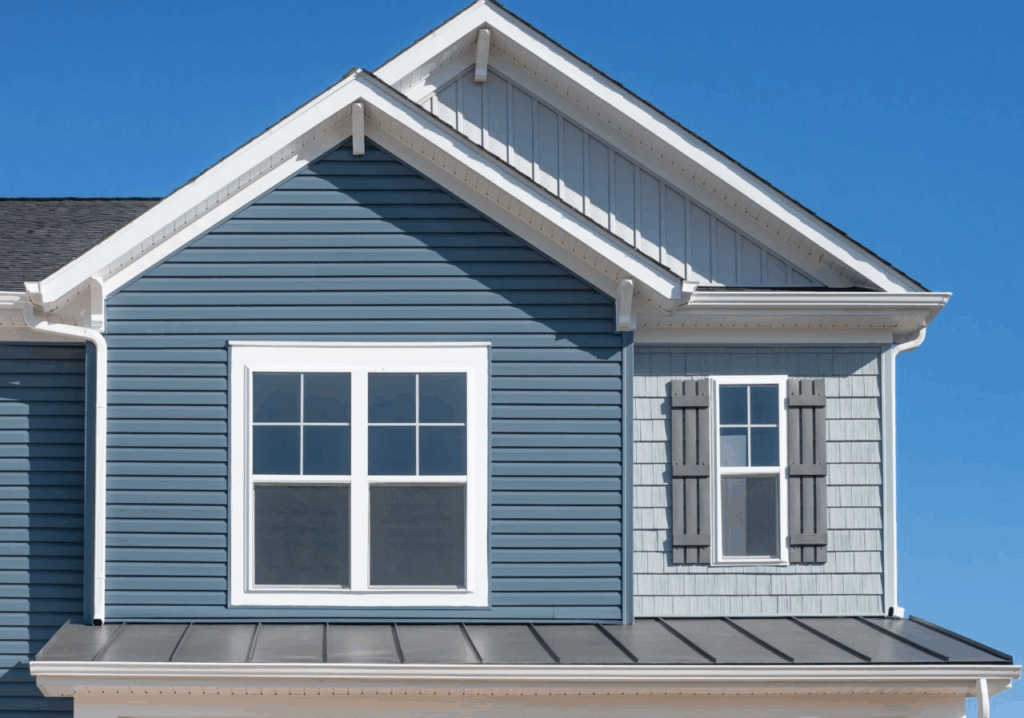
Delving into the realm of RPS metal roofing and siding, this introductory paragraph aims to pique the interest of readers with a glimpse into the benefits and intricacies of using metal for roofing and siding.
Providing a detailed overview of the durability, maintenance, and design options associated with RPS metal roofing and siding, this content sets the stage for an informative discussion on this versatile material.
Metal Roofing and Siding Overview
Metal roofing and siding offer a range of benefits that make them a popular choice for residential and commercial buildings. These benefits include durability, longevity, energy efficiency, and aesthetic appeal.
Types of Metal Used in Roofing and Siding
Metal roofing and siding can be made from a variety of materials, with the most common types being steel, aluminum, copper, and zinc. Each type of metal has its own unique properties and characteristics that make it suitable for different applications.
- Steel: Steel is one of the most popular choices for metal roofing and siding due to its strength and affordability. It is available in different gauges and finishes, making it versatile for various architectural styles.
- Aluminum: Aluminum is lightweight, corrosion-resistant, and can be easily shaped and formed. It is a popular choice for coastal areas or buildings with high humidity.
- Copper: Copper is known for its striking appearance and natural patina that develops over time. While more expensive than other metals, copper roofing and siding can last for decades with minimal maintenance.
- Zinc: Zinc is a durable and environmentally friendly metal that offers excellent corrosion resistance. It is often used in standing seam roofs and can last for up to 100 years with proper care.
Durability and Longevity of Metal Roofing and Siding
Metal roofing and siding are renowned for their durability and longevity compared to other materials like asphalt shingles or wood. Metal roofs can withstand harsh weather conditions, including strong winds, heavy rain, and snow, without deteriorating or losing their structural integrity.
They are also resistant to fire, mildew, and rot, making them a low-maintenance and cost-effective option in the long run.
RPS Metal Roofing
Metal roofing installation involves several steps to ensure a durable and long-lasting roof for your property. The process typically includes measuring and cutting the metal panels, preparing the roof deck, installing underlayment, fastening the panels, and finishing with trim pieces.
Installation Process of RPS Metal Roofing
- Measure and cut metal panels to fit the roof dimensions accurately.
- Prepare the roof deck by ensuring it is clean, dry, and free from any debris.
- Install underlayment to provide an extra layer of protection against moisture and weather elements.
- Fasten the metal panels securely to the roof deck using appropriate screws or clips.
- Finish the installation by adding trim pieces along the edges for a clean and polished look.
Maintenance for RPS Metal Roofing
Metal roofing requires minimal maintenance compared to traditional roofing materials. Regular inspections for loose screws, damaged panels, or debris buildup are essential to ensure the roof's longevity. Cleaning the roof surface with water and mild detergent can help prevent corrosion and preserve the aesthetic appeal
Cost Comparison of RPS Metal Roofing
- RPS metal roofing may have a higher upfront cost than traditional roofing materials like asphalt shingles or wood shakes.
- However, the long-term cost benefits of metal roofing, including durability, energy efficiency, and low maintenance requirements, can outweigh the initial investment.
- Additionally, metal roofing is known for its longevity, which can result in cost savings over time due to fewer repairs and replacements.
RPS Metal Siding
Metal siding from RPS offers a variety of design options that can enhance the aesthetic appeal of any building while providing durability and protection. When choosing the right color and style of RPS metal siding, consider the overall look of the building, surrounding landscape, and your personal preferences.
Neutral colors like grey, beige, or white are versatile and can complement various architectural styles. Bold colors like red, blue, or green can make a statement and add a pop of color to the exterior. Additionally, different textures and profiles are available to create a unique and customized look for your property.Using RPS metal siding also comes with environmental benefits.
Metal is a sustainable material that is often made from recycled content and is fully recyclable at the end of its lifespan. Metal siding is energy-efficient, reflecting heat from the sun to reduce cooling costs in the summer and insulating the building to retain heat in the winter.
This can lead to lower energy consumption and reduced carbon emissions over time.
Design Options for RPS Metal Siding
Metal siding from RPS comes in various profiles, including vertical panels, horizontal panels, and shingles, allowing for different looks and textures. These profiles can be combined with different colors and finishes to create a modern, traditional, or industrial style for your property.
Tips for Choosing the Right Color and Style
- Consider the architectural style of the building and the surrounding environment when choosing a color.
- Think about the long-term maintenance and durability of the color and finish you select.
- Collect samples and view them in different lighting conditions to see how the color appears throughout the day.
- Consult with a design professional or contractor for advice on choosing the best color and style for your specific needs.
Environmental Benefits of RPS Metal Siding
Metal siding is a sustainable choice that can contribute to green building practices. By using recycled content and being fully recyclable, metal siding reduces the environmental impact of construction projects. Additionally, the energy-efficient properties of metal siding can help lower overall energy consumption and contribute to a more eco-friendly building design.
Conclusive Thoughts
Wrapping up our exploration of RPS metal roofing and siding, this final paragraph encapsulates the key points discussed, leaving readers with a comprehensive understanding of the topic and its advantages.
Questions and Answers
What are the benefits of using metal for roofing and siding?
Metal offers durability, longevity, and environmental sustainability compared to other materials.
How is RPS metal roofing installed?
RPS metal roofing is installed using a specific process that ensures proper fit and longevity.
What design options are available for RPS metal siding?
RPS metal siding comes in various styles and colors to suit different preferences and architectural designs.














